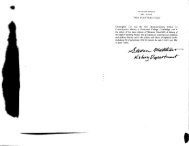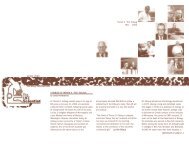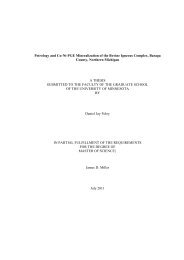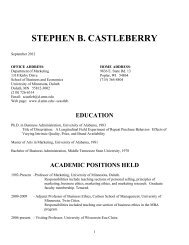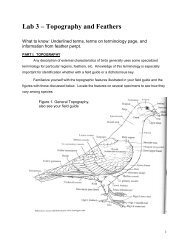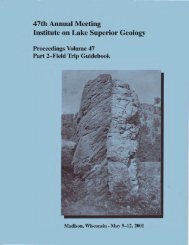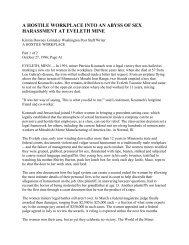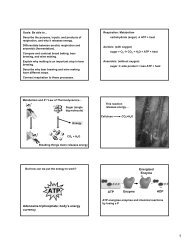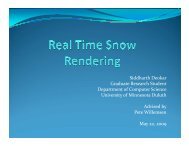Program, Abstracts, and Guidebooks - University of Minnesota Duluth
Program, Abstracts, and Guidebooks - University of Minnesota Duluth
Program, Abstracts, and Guidebooks - University of Minnesota Duluth
Create successful ePaper yourself
Turn your PDF publications into a flip-book with our unique Google optimized e-Paper software.
-10-<br />
THE SOUTHERN<br />
ASSOCIATED<br />
PART OF THE DULUTH COMPLEX AND<br />
KEWEENAWAN ROCKS, MINNESOTA<br />
BILL BONNICHSEN<br />
Cornell <strong>University</strong>,<br />
Ithaca, N.Y. 14850<br />
A B ST EtA CT<br />
The southern part <strong>of</strong> the <strong>Duluth</strong> Complex was reported to consist<br />
mainly <strong>of</strong> troctolitic rocks <strong>and</strong> older anorthositic rocks at the<br />
15th Annual Institute on Lake Superior Geology <strong>and</strong> elsewhere (Bonni—<br />
chsen, 1969). Geologic mapping in several 7½—minute quadrangles in<br />
the Babbitt—Hoyt Lakes area (Bonnichsen, 1970) shows that troctolitic<br />
rocks lie north <strong>and</strong> west <strong>of</strong> the principal occurrences <strong>of</strong> anorthositic<br />
rocks, thus forming the footwall side <strong>of</strong> the complex in the same manner<br />
as at <strong>Duluth</strong> (Taylor, 1964). Between <strong>Duluth</strong> <strong>and</strong> the Babbitt—Hoyt Lakes<br />
area, troctolitic rocks predominate across the width <strong>of</strong> the complex;<br />
exposures <strong>of</strong> anorthositic rocks are restricted to isolated occurrences<br />
<strong>and</strong> inclusions within the troctolitic rocks, rather than large areas<br />
with contiguous outcrops.<br />
In 1969, the writer suggested that troctolitic magmas had<br />
intruded along a contemporaneously widening fracture zone between the<br />
previously—formed anorthositic rocks to the east <strong>and</strong> the Early <strong>and</strong><br />
Middle Precambrian basement to the west. Field work during the summer<br />
<strong>of</strong> 1969 <strong>and</strong> examination <strong>of</strong> drill core in recent months tends to substantiate<br />
this view. Recently obtained knowledge on the variety <strong>and</strong><br />
diversity <strong>of</strong> rock types within the southernpart <strong>of</strong> the complex indicates<br />
the development <strong>of</strong> the troctolitic rocks was a complex event<br />
involving multiple injections <strong>of</strong> magma, the incorporation <strong>of</strong> a great<br />
amount <strong>of</strong> previously—formed Keweenawan igneous rocks as inclusions <strong>and</strong><br />
the development <strong>of</strong> relatively small quantities <strong>of</strong> Fe— <strong>and</strong> Ti—rich magma,<br />
some <strong>of</strong> which was ultramafic, from nagmas which initially were troc—<br />
tolitic.<br />
Much <strong>of</strong> the 1969 field season was devoted to looking for<br />
<strong>and</strong> examining outcrops along, <strong>and</strong> east <strong>of</strong>, the eastern or hanging<br />
wall margin <strong>of</strong> the complex. This margin, for the first 30 miles north<br />
<strong>of</strong> <strong>Duluth</strong>, is mainly a contact between troctolitic <strong>and</strong> locally anor—<br />
thositic rocks to the west <strong>and</strong> gabbroic <strong>and</strong> dioritic intrusives to<br />
the east. Exposures <strong>of</strong> mafic volcanics are uncommon east <strong>of</strong> the<br />
southern part <strong>of</strong> the complex, except within one or two miles <strong>of</strong> Lake<br />
Superior.




